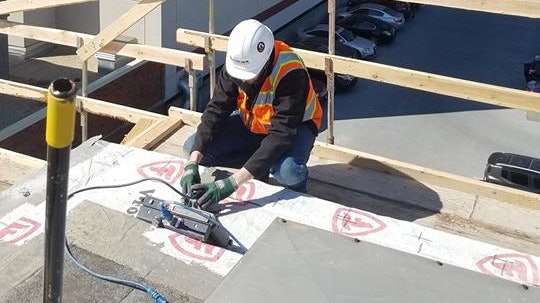Construction sites can be hazardous environments with potential risks that can lead to serious accidents and injuries if not properly addressed. Ground Penetrating Radar (GPR) scanning is a valuable technology that can help prevent construction mishaps by providing crucial information about what lies beneath the surface before any digging or excavation takes place. This article will explore the benefits of GPR scanning in enhancing safety on construction sites and reducing the likelihood of costly incidents.
The Importance of Safety in Construction
Safety is a top priority in the construction industry, as the work involves various hazards such as unstable structures, heavy machinery, electrical wiring, and underground utilities. Failing to identify potential risks before starting a project can result in accidents, delays, and financial losses. By using advanced technologies like GPR scanning, construction companies can mitigate these risks and create a safer work environment for their employees.
How GPR Scanning Works
Ground Penetrating Radar is a non-invasive geophysical method that uses high-frequency radio waves to image the subsurface. GPR equipment consists of a transmitter-receiver antenna that emits electromagnetic pulses into the ground, which bounce back when they encounter different materials or structures below the surface. By analyzing the reflected signals, GPR technicians can create detailed underground maps that show the location of utilities, pipes, cables, rebar, voids, and other obstructions.
- GPR scanning can be done quickly and efficiently, allowing construction crews to obtain real-time data on site conditions.
- The technology is non-destructive, meaning it does not require any drilling or excavation to gather information.
- GPR can detect objects buried at different depths, providing a comprehensive view of what lies beneath the surface.
Benefits of GPR Scanning for Construction Safety
Utilizing GPR scanning as part of the pre-construction planning process can offer numerous advantages in terms of safety and risk management:
- Preventing utility strikes: GPR can accurately locate underground utilities such as gas lines, electrical cables, water pipes, and communication wires, reducing the risk of accidental damage during excavation.
- Avoiding structural collapses: By identifying voids, cavities, or weak spots beneath the surface, GPR can help prevent collapses or sinkholes that may pose a danger to workers and equipment.
- Minimizing project delays: Unforeseen obstacles encountered during excavation can lead to costly delays in construction projects. GPR scanning helps identify potential challenges in advance, allowing for proper planning and mitigation strategies.
- Enhancing worker safety: With accurate information about subsurface conditions, construction crews can work more confidently and efficiently, knowing the location of hazards and obstructions.
Case Studies: Real-World Applications of GPR Scanning
Several construction companies have successfully integrated GPR scanning into their project workflows, resulting in improved safety outcomes and cost savings. Here are some examples of how GPR technology has been used in the field:
Case Study 1: Highway Construction
During the expansion of a highway interchange, a construction team used GPR scanning to survey the subsurface before installing new support structures. The scan revealed the presence of an abandoned utility line that was not documented in existing plans, preventing a potential disaster and saving the project from costly delays.
Case Study 2: Building Renovation
When renovating an old building in a dense urban area, contractors employed GPR scanning to map out the location of buried foundations and utilities. The scan helped them avoid damaging critical infrastructure and ensured the safety of workers in a confined construction site.
Conclusion
Construction sites are dynamic environments where safety should always be a priority. By incorporating technologies like Ground Penetrating Radar (GPR) scanning into their workflow, construction companies can proactively identify potential hazards and minimize the risk of accidents and mishaps. Investing in safety measures not only protects the well-being of workers but also contributes to the successful and timely completion of construction projects.

